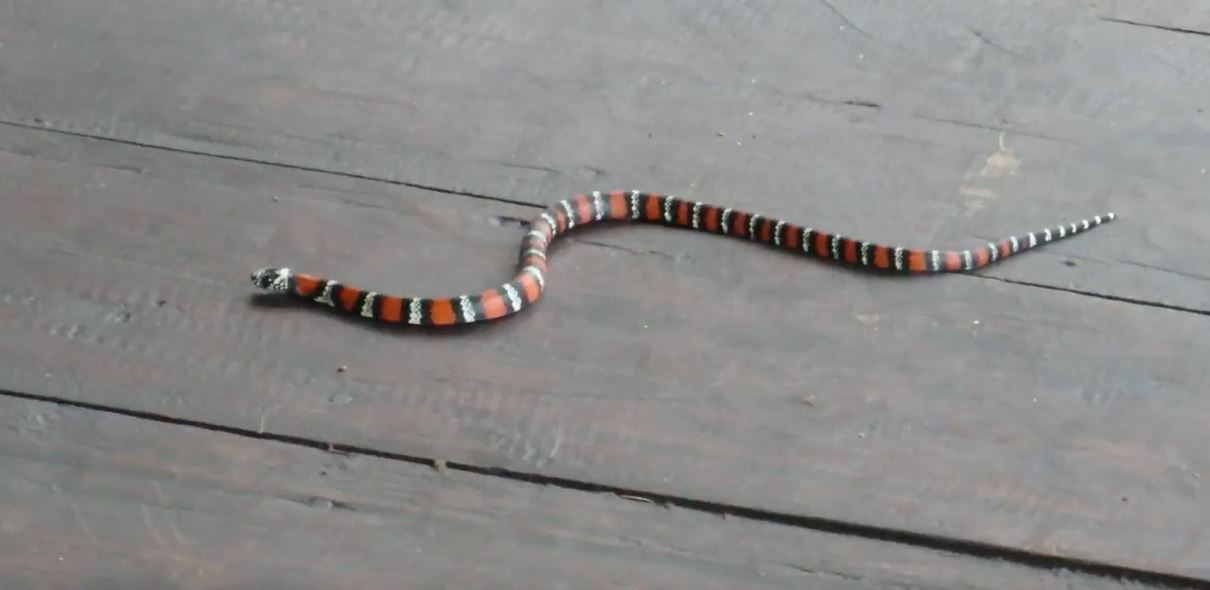The Coral Snake

• Appearance and biology
The coral snake is a type of snake that is fairly small in nature as compared to other snakes with the North American Coral snake just about 91cm lengthwise. It has a blunt head and round pupils. Their scales are smooth in nature no wonder their glossy appearance. The snake is bright colored. It is often confused with the milk snake that is non-venomous due to their coloration. The coral snake consists of black, red, white or yellow bands. For the coral snake, the red bands touch the yellow ones while in the milk-snake; their red bands touch the black bands. The coral snake is venomous in nature and their fangs are always erect.
• Lifecycle
Coral snakes are known to lay their eggs in the open and not necessarily in their dens. In the month of June and July, the female snake lays about 3 to 5 eggs. These eggs hatch outside the female body and so they do not ‘give birth’ to their young ones. The hatching takes place about 2 to 3 months after they are laid. A young coral snake is normally the size of that of an earthworm. The color scheme of these young ones resembles that of the adults.
• Habitat
The coral snakes are mostly found in the Southwestern and Southeastern regions of the United State. They like the marshy areas, wooden areas or generally areas that have loose soil. During the day hours, they prefer staying in their dens where they come out during the evenings to hunt.
• Diet
The coral snake is cannibalistic in nature. As for their diet, they would feed on amphibians like the frogs, birds, reptiles and invertebrates. They also feed on young coral snakes.
• Behavior
The Coral snake will normally spend most of its time in their den or under fallen leaves where they come out when it’s time to hunt or during the rainy season when its breeding time. Coral snakes are shy in nature and when encountered with danger they would prefer to flee rather than face it. However, it is venomous and it will use this to protect itself where need be by striking. Its striking technique is, however, different from that of the viper. Unlike the viper that just strike and lets go, the coral snake holds on to its attacker with the intention of the venom from their mouth to the wound.
The Coral Snake
SNAKE CONTROL: We specialize in snake control projects. Call us now for snake control in your city or town.
Go back to the How to get rid of snakes page to learn more about The Coral Snake
To find out our prices for snake control, visit our snake removal prices page.


